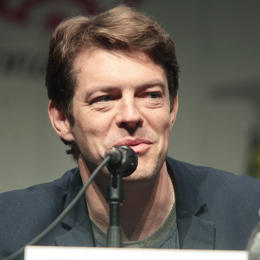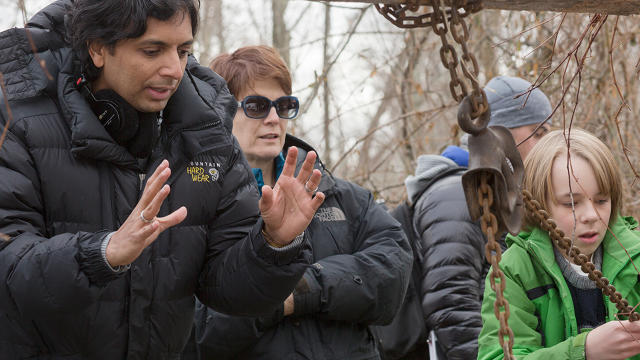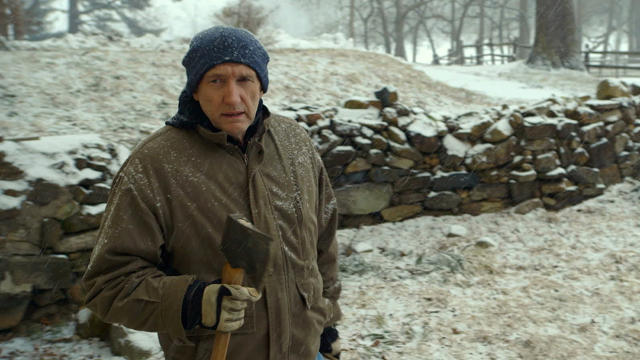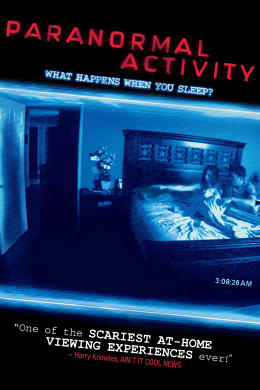M. Night Shyamalan, Jason Blum, and The Creativity of Limitations
Producer Jason Blum perfected the model for high-concept low-budget horror, and he used it to aid in M. Night Shyamalan’s creative comeback.
If the scariest thing imaginable is the unseen lurking threat you can only imagine, perhaps horror is the movie genre best suited for minimalism. High-concept, low-budget horror is at the core of super producer Jason Blum’s wheelhouse, and it’s the reason he nearly always makes a box office killing.
The last movie M. Night Shyamalan made starred Will Smith and had a reported budget of $130M. The director’s new film, The Visit, cost a relative pittance of $5M to make, and its biggest star is Kathryn Hahn—perhaps best known for her roles in Parks and Recreation and various Jill Soloway projects. The Visit is far and away Shyamalan’s best-reviewed film in a teenager’s lifespan, and it quintupled its budget on opening weekend. For that, he is indebted in no small part to Jason Blum.
“If you take away all the bells and whistles, it forces the director to focus on what I think are the best ingredients for a great movie: performance, character, story,” says Blum, whose production company, Blumhouse, is behind The Visit. “When you lower the budget, you really push the director to challenge him or herself more. I always think that benefits movies.”

The probability of a dedicated horror buff not having seen one of Blum’s movies over the past five years or so is negligible. Starting with Paranormal Activity in 2009, his production company has been responsible for a string of monster hits, including the Insidious series, the Sinister movies, both Purges, and the recent Unfriended. (He also stepped outside of his typical genre to shepherd last year’s Oscar-winning drama, Whiplash.)
Blumhouse movies are known for having no major special effects, no stadium scenes with lots of extras, very little CGI, and less of a lot of other elaborate elements Hollywood directors typically have to divert their attention away from pure storytelling to attend to. Blum and his associates take experienced filmmakers and give them far more creative control than they might find through other channels, in exchange for working for scale up front. It’s a style of filmmaking M. Night Shyamalan was ready to embrace.

Blum first reached out to the director about five years ago to talk about collaborating. He even flew to Philadelphia at one point and sat down with Shyamalan at his house and pitched the low-budget Blumhouse model and the creative benefits of low-budget filmmaking. (Blum has a list of filmmakers he’s pursuing at all times. At the top right now: Edgar Wright.)
“Night was always nice and polite,” Blum says, “But he always played his cards close to his vest. I couldn’t tell if he was interested.”
After years of being regularly in touch, Blum didn’t hear from Shyamalan for an extended break. One day out of the blue, however, he got a phone call from him with some surprising news.
As Blum recalls, “He said, ‘I did it.’ And I said, ‘What do you mean?’ And he said, ‘Well, I made a low-budget movie.’ And I said, ‘But we were supposed to do it together!’”

Shyamalan was apparently far too deep in the throes of inspiration to circle the wagons. He quickly, quietly wrote and directed a complete cut of The Visit on his own. The film is a documentary-style yarn about two children staying for a week with the grandparents they’ve never met while their mother, estranged from her folks, goes out of town. Of course, the grandparents end up exhibiting behavior one might describe as sinister, or perhaps insidious. When Blum saw the rough cut about a year ago, it was love at first sight. He was finally in the M. Night Shyamalan business.

Blum arrived at his particular style of filmmaking after spending the first fifteen years of his career with one foot in the studio world and one in the independent realm. Both sides coalesced when he acquired Paranormal Activity, the ultimate independent movie distributed by a major studio.
“When that movie became a hit, I thought to myself, ‘I bet this could be repeated.’ Like, I think you could make movies independently but make them for a large audience as opposed to typical independent movies, which are made for an art house or a festival audience,” Blum says. “Everyone thought I was nuts, but then we did it a few more times and everyone thought I was less nuts.”
To some degree, people might have thought Blum was nuts to want to work with Shyamalan at this point in the director’s career. Night’s previous two films, After Earth and The Last Airbender proved profitable with a global audience, but they were not well-loved by his fans or critics. These family-friendly efforts were greeted with the same luke-warm enthusiasm as his R-rated debut, The Happening, in 2008. He was due for a creative rejuvenation.

“The way he describes it is that he wanted to go back to the movies that he had made initially,” Blum says. “He told me that once he had kids, he got away from genre movies for a little bit but now that his kids are older he wanted to go back to it again.”
The Visit certainly fits the bill. Like a lot of other Blumhouse films, it has relatively few speaking parts, no special effects, well-crafted jump scares, and the budget-friendly found footage style used in not only Paranormal Activity but also more recent projects such as The Gallows and Creep.

“I feel like The Visit is really a mix,” Blum says. “There are a lot of things in it that none of our movies have ever had and there are a lot of things in The Visit that none of Night’s movies have ever had. So it feels like it’s a great mixing of what I do and what he does, since we do things that are complimentary but by no means the same.”
Once Shyamalan handed over his cut a year ago, it took some massaging to further blend in the Blumhouse feel. Blum and his crew did a lot of work on editing and sound in post. They also tested the movie in front of audiences several times, watching along with them, and tweaked scenes based on the results.

The finished film makes a compelling case for the creative comeback of M. Night Shyamalan. The Visit has a sustained atmosphere of dread punctured by occasional bursts of levity derived from the richness baked into the characters. It’s also divergent enough a premise to fit snugly within the Blumhouse universe, whose films are each off-kilter in their own way.
“Because movies are typically very expensive, decision makers tend to always compare a potential movie to three other movies that were successful,” Blum says. “Because we have much less capital at risk, we’re able to do the opposite, which means we look at scripts and we ask, ‘Does this feel new? Does this feel like nothing we’ve ever seen before?’ That’s what we’re looking for.”
Judging by the critical and box office reception to The Visit, a film about nefarious grandparents, it might be what audiences are looking for, too.
Fast Company , Read Full Story
(81)














